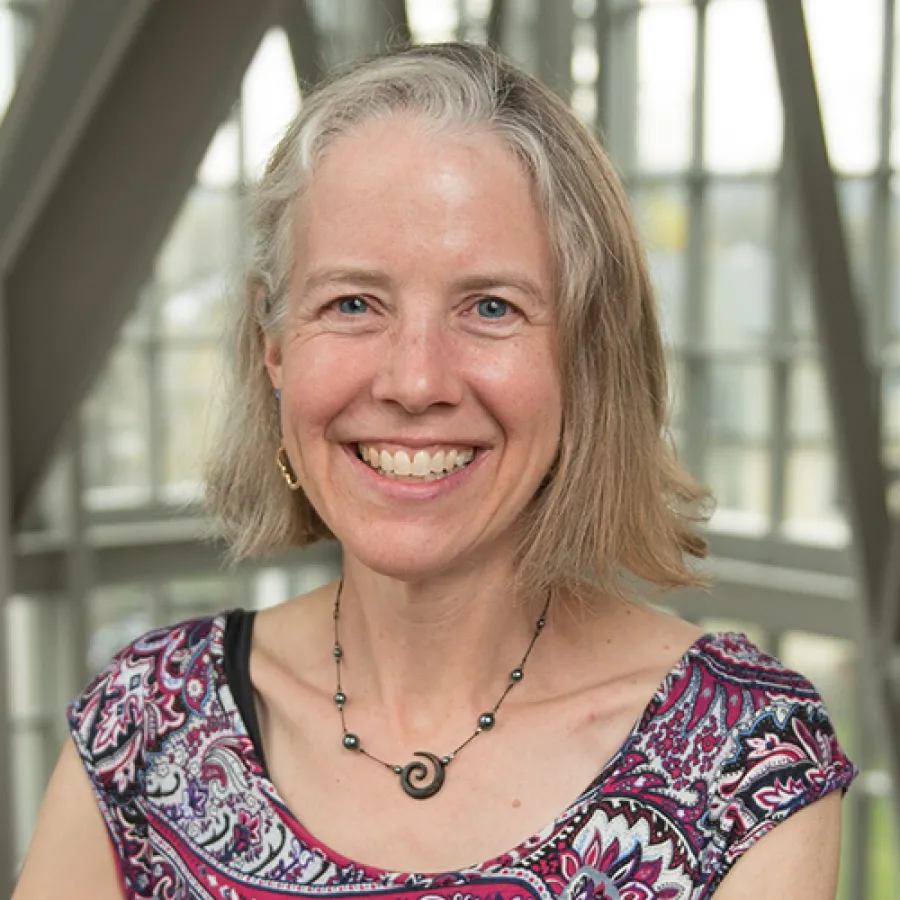An Example of Energy Storage
CEEDS Research
Professor Judy Cardell assesses the viability of thermal energy storage on campus.

Published July 24, 2024
When Judy Cardell was finishing graduate school at MIT, her goal was to work for the Federal Energy Regulatory Commission. She landed a job there, only to discover it wasn’t the right fit after all, and a few years later, she “fled.” “Not my personality,” she says now. After several years of consulting, she arrived at Smith in 2002 with a joint appointment in the Picker engineering program and the department of computer science. Cardell is a specialist in the analysis and design of electric power systems and energy markets, which means her work is multi-faceted, involving economics and policy as well as engineering.
Cardell is particularly interested in wind power, calling it “much more interesting, with more uncertainty” than solar power. She spent many years consulting with colleagues at Cornell about integrating wind power into the power grid. One of the challenges in relying more on renewable sources of energy is that they’re more variable than a power plant usually is. When there’s no wind, there’s no wind power. Cardell and her colleagues assessed when it made sense economically to add wind into the grid and how much.
One important factor in adding more renewable sources of energy into the grid is electrical demand response, which means that electricity customers adapt their energy consumption “in response to grid conditions.” Demand response allows electric utilities to reduce their peak demand and helps to “balance the variable generation from renewable energy resources.” Cardell calls it “a fundamental element for reducing society’s carbon footprint.” Right now, demand response is “well established as a concept, yet not widely implemented,” in part because of consumer reluctance. In practice, demand response might mean that air conditioners would be set several degrees higher on the hottest days or that dishwashers would be run overnight, when power is less expensive. Studies have shown that people generally don’t notice these small changes, especially when they are automated. Cardell says that she tells her students, “We can't go 100% renewable until people can live with not having access to all the electricity they want, all the time. We all need to be willing to make small adjustments in when and how much electricity we use.” So far, this has proven to be a hard sell.
Students working with Cardell this summer. From left to right: KZ Zou ’26, Asmaa Zoheiri ’25, and Almanzo Gao ’25.
When Cardell learned that Smith was considering integrating thermal energy storage with the existing ground source geothermal system, her interest was piqued. A geothermal system like Smith’s still requires electricity to run the heat pumps that are required to distribute heating and cooling to the buildings. The potential of thermal energy storage is to give the system more flexibility. Finding the right balance, however, is crucial.
“If we add thermal energy storage, we're adding extra work for the heat pump,” Cardell says. “If the thermal energy storage is really expensive, it doesn't make sense to buy more electricity and have the capital cost of storing the thermal energy. It's easier just to build a bigger geothermal system. But if you can use the storage to then work with a smaller geothermal system, that's the trade-off.”
Cardell notes that downsizing the geothermal system would save construction costs and material, and the money saved would go to thermal energy storage. “And then during that peak time, your geothermal system isn't big enough to serve the peak demand. But it doesn't matter because you stored that extra energy earlier to use during the peak demand time.” This flexibility would allow Smith to respond more nimbly to regional electricity prices and power grid conditions.
For now, thermal energy storage is being added only to the geothermal system at the fieldhouse test site. With funding from the Center for the Environment, Ecological Design and Sustainability (CEEDS), Cardell and her students will use the data from the fieldhouse to model the third district of Smith’s geothermal system which has not yet been built. If thermal energy storage works as planned in the fieldhouse, it might then be possible to downsize the third district’s geothermal system and use thermal energy storage to make up the difference. Cardell and her students will look at factors such as thermal load, storage capacity, electricity prices, and weather. They also need to model the possibility of uncertainty. “What happens when we don't quite meet the energy needs?” Cardell asks. “Can we say to the campus, ‘We're part of solving climate change, and you are going to have to put up with a 2° warmer temperature inside’?” The goal ultimately is to develop a demand response strategy for Smith.
Cardell says one key factor in a wider implementation of demand response is pilot projects that demonstrate its benefits. She hopes that developing a successful demand response strategy for Smith could lead others to follow. She notes that Smith is “one of the first colleges of this size to be doing this. So, we're hoping and advocating for other colleges to learn from what we've done, so that they could then do it more easily.” Smith is making as much of an impact as it can, she says. “But Smith is small in the grand scheme of things. I think we’re going to have a bigger impact by being an example for other colleges and perhaps urban neighborhoods to learn from.”
